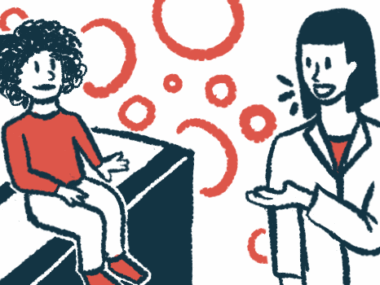Gene Therapy Boosts Motor Skills, Life Quality in Young Patients
Written by |
Rawpixel.com/Shutterstock
A gene therapy dramatically improved the motor functions and quality of life in children with aromatic L-amino acid decarboxylase (AADC) deficiency in a recent Phase 1 clinical trial.
The healthy copy of the AADC gene that the children received corrected the seizure-like episodes associated with the disorder and, in many cases, enabled the children to develop normal head control, sit independently, and walk with support.
The study, “Gene therapy for aromatic L-amino acid decarboxylase deficiency by MR-guided direct delivery of AAV2-AADC to midbrain dopaminergic neurons,” was published in the journal Nature Communications.
Without the AADC enzyme, the body cannot produce dopamine and serotonin, two molecules that serve as messengers between nerve cells. This disrupts the communication between the brain and other parts of the body, hindering normal development and causing symptoms such as weak muscles and uncontrollable movements of the hands and feet.
One of the disorder’s characteristic symptoms consists of seizure-like episodes called oculogyric crises, in which spasms of the eye muscles cause the gaze to fix upwards for minutes to hours. Anxiety and emotional outbursts often accompany these episodes.
“Remarkably, these episodes are the first symptom to disappear after gene therapy surgery, and they never return,” Krystof Bankiewicz, MD, PhD, of the Ohio State University College of Medicine, said in a university press release.
Bankiewicz and colleagues from several other institutions conducted a clinical trial (NCT02852213) to test the safety and efficacy of using a harmless virus to deliver a healthy copy of the AADC gene directly into patients’ brains.
In particular, the researchers targeted two regions of the midbrain — the substantia nigra pars compacta and the ventral tegmental area — which contain dopamine-producing neurons with intact nerve projections in AADC patients. The approach differs from that of PTC Therapeutics’ gene therapy PTC-AADC, which targets a different region called the putamen.
The researchers conducted minor surgery on participants to slowly infuse the therapy, while monitoring the spread of the infusion within the brain via real-time magnetic resonance imaging (MRI).
“Really, what we’re doing is introducing a different code to the cell,” said James Elder, MD, one of the researchers involved in the study. “And we’re watching the whole thing happen live. So we continuously repeat the MRI and we can see the infusion blossom within the desired nucleus.”
The study’s main goals were to assess the treatment’s safety and document evidence of restored AADC activity. Secondary goals included evaluating changes in motor function and other symptoms.
Four girls and three boys between the ages of 4 and 9 participated in the study. Three patients received a lower dose of 8.3 × 1011 vector genomes (vg)/mL, while the remaining received a higher dose (2.6 × 1012 vg/mL).
The treatment was found to be generally safe and well-tolerated in the children. Oculogyric crises “ceased completely” in six of the seven children within three months of treatment, and didn’t return throughout the two-year follow-up period. The remaining patient had fewer episodes and with a significantly reduced severity compared with before surgery.
Although how fast motor symptoms improved varied widely from one individual to another, six of the children gained normal head control and four could sit without support by one year post-surgery.
Three were able to reach and grasp by the one-year mark and one was able to speak roughly 50 words.
Two children — ages 8 and 6 when the study began — were able to walk with trunk support at one year post-treatment and to walk with two-hand support by 18 months. One of them began taking independent steps 2.5 years following the treatment.
“Midbrain gene delivery in children with AADC deficiency is feasible and safe, and leads to clinical improvements in symptoms and motor function,” the researchers concluded, noting that “greater improvement was not obviously associated with either [higher dose] or with younger age in this small group of subjects.”
Participants also experienced fewer sleep disturbances and feeding difficulties, and caregivers reported sustained mood improvements.
“This work provides a framework for the treatment of other human nervous system genetic diseases,” Bankiewicz said. “It’s our hope that this will be first of many ultra-rare and other neurologic disorders that will be treated with gene therapy in a similar manner.”





